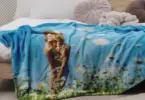NFT fever has gripped the world this year. But the question is, what are NFTs, why are so many people clamoring to get their hands on them, and how Non-fungible tokens (NFTs) are getting the attention of media in the world of fashion?
Non-fungible tokens, also known as NFTs, are cryptographic assets on the top of a blockchain system that include unique identification codes which differentiate them from others. They can’t be sold or swapped in the same way that cryptocurrencies can. It is the total opposite of fungible tokens (cryptocurrency), which are all the same and may thus be used for the medium of exchange.

Cryptocurrencies such as Bitcoin, Litecoin and Ethereum, can be easily exchanged, swapped and traded just like real money, also known as fiat currencies. You can easily buy Litecoin or other cryptocurrency and exchange or trade it. One Litecoin, for instance, is always worth the same as another Ethereum. A single unit of Bitcoin is always equivalent to another unit of Bitcoin. Cryptocurrencies are best suited for use as a stable and reliable means of exchange in the digital economy because of their property of fungibility.
As technology and digital fashion have risen to prominence, fashion has been highly interested in non-fungible tokens, or NFTs.
The desire for non-fungible tokens has spread across the fashion industry at tremendous speed. The entrance of NFTs—non-fungible tokens—into the fashion industry seemed certain, especially after the snappy acronym had firmly gripped the collective mind of the art, music, and film sectors during the previous year.
From street-wear to high couture, it has swiftly invaded practically every aspect of the fashion industry. For the time being, people may wonder what the three letters stand for. But it’ll only be a matter of time until your granny is paying hundreds of dollars in Bitcoin to acquire a one-of-a-kind digital asset of the clothing she likes.
Many individuals and organizations feel that NFTs will be the next big thing in fashion, design, and art.
Gucci collaborated on an NFT film named “Aria” for their fall 2023 collection, which sold for $25,000 in June at Christie’s. Beeple, the most well-known digital artist, managed to sell his work for $69 million at Christie’s earlier this year. Christie’s is now accepting auction bids in Ethereum, the most prominent type of digital money, i.e., cryptocurrency, as a result of the NFTs’ sudden boom. Burberry, the premium fashion business, announced the debut of Sharky B, an NFT that would appear in the video game Blankos Block Party last week. Virtual clothes, including a jetpack, will be offered to players who adorn their cartoon avatars in Burberry clothing. Other companies are also dipping their toes into the digital river in a variety of ways, hoping to jump on the bandwagon that has seen NFT collections sell out in seconds.
NFTs are a technique to turn a technological good that can be replicated continuously – such as a picture, clip, or text – into something distinctive that can then be confirmed on a blockchain. It’s a digital equivalent of an authentication certificate.
Fashion looks to be a natural fit for the realm of one-of-a-kind collectibles that represent innovative NFTs.
The cornerstone of the creative NFT market is one-of-a-kind digital parts, either modified from popular items or exclusively produced for the digital environment. Digital garments are apparently transformed into marketable things through the use of creative NFTs. Designers can verify copyright, reliability, and uniqueness by using blockchain verification. Non-fungible tokens (NFTs) are all incredibly popular nowadays and many in the world of fashion are experimenting with new ways to create one-of-a-kind products that encapsulate self-expression and improve the user shopping experience. Fashion businesses currently utilize blockchain technology to combat piracy and track sustainable development and ethical production across the supply chain.
It has suddenly become feasible to possess digital objects solely, just as it is possible to own physical items. NFTs are already well-known in the arts, music, and sports, and the fashion industry is following suit. The introduction of NFTs into the digital fashion sector may be linked back to the gaming world, which is growing more authentic and realistic with each passing year. Personalized digital avatars gained popularity in the digital world when COVID-19 lockdowns were implemented throughout the world last year. Brands began cooperating with gaming platforms to permit users to buy apparel from their favorite brands for their digital avatars, sensing a growing possibility.
Customers don’t purchase another pair of pricey shoes or a purse because they really need it, as all luxury businesses know. They buy expensive products to be a part of the luxury culture, tradition, and distinctive experience that a certain brand has created.
NFTs are similar to social assets in that they may provide clients with a certain level of prestige, as well as a new market for traders and investors.
NFT creators may be paid a bonus every time their work is sold or transferred. Previously, second hand markets had difficulty in attracting the most discerning buyers and collectors. Because NFTs are supposed to be eternal, they have the potential to change the laws of the luxury game forever.






Leave a Comment
You must be logged in to post a comment.